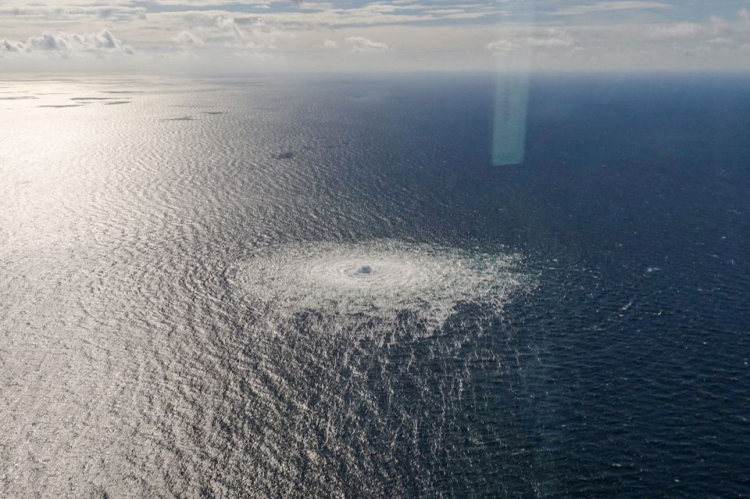Nord Stream, Sabotage And The Greater European Marine Energy Infrastructure

After nearly two weeks of spewing out an estimated approximately 778 million standard cubic meters of toxic methane gas from three separate ruptures in the Nord Stream 1 & 2 lines on the Baltic Sea floor, the Danish Energy Agency said yesterday that the leaks have finally stopped.
The United Nations Environmental Programme noted over the weekend that the Nord Stream leaks were likely the biggest single release of climate-changing methane ever recorded.
So how did this happen?
Back on 22 February 2022 new German Chancellor Olaf Scholz halted the certification process on Nord Stream 2, just days before Russian troops invaded Ukraine. As a result Nord Stream 2 was never put into operation, though it contained technical gas pressurization. Over the course of the next several months, as Russia began to lose its hold on significant chunks of Ukrainian territory in the southeast of the country and as the west imposed wide-ranging sanctions on Russia with teeth, Gazprom -- surely at the behest of Vladimir Putin -- reduced the amount of gas shipped in Nord Stream 1 to 20 percent of capacity.
Currently Russia has largely cut off gas supplies to Europe in retaliation against sanctions. This has deepened market tensions and uncertainty ahead of the coming winter, not just for Europe but also for all markets that rely on the same supply pool of liquefied natural gas (LNG).
There is also considerable uncertainty concerning the explosions which tore holes in the Nord Steam pipelines. Who would have an interest in doing this and who would have the capability? The United States, Ukraine and most of its European allies have declared Russia the culprit. Russia, to wit, has blamed the United States, asserting the Americans have long been against Nord Stream and that they would have a motive for carrying out such an act of sabotage, particularly as this would create further incentives to ship LNG from America to Europe.
Possibly.
The fate of Nord Stream up to now an integral part of European energy infrastructure, will surely be linked to the outcome of Russia's war in Ukraine. But as Sergey Vakulenko of the Carnegie Endowment for International Peace says, "Europe was not counting on the resumption of supplies by this route any time soon, and the pipelines were in any event doomed to lose their value in coming years as Europe moves to procure its gas from anywhere other than Russia ... The attack may, however, have signaling value. If so, that does change the strategic landscape in the energy war. If perpetrated by Russia, the signaling value toward the West—which would certainly know Russia is behind the explosions—may be a threat to the rest of the marine energy infrastructure. Back in 2021, Putin told a gathering of military leaders: " If our Western colleagues continue the obviously aggressive stance, we will take appropriate retaliatory military-technical measures and react harshly to unfriendly steps. I want to emphasize that we have every right to do so." Vakulenko: "Was the Nord Stream attack a hint that similar mishaps might happen to some or all of the seven major pipelines delivering Norwegian gas to the UK and continental Europe?"
Note from the editor: The original image for this news item was misleading. We have replaced it in the meantime.
